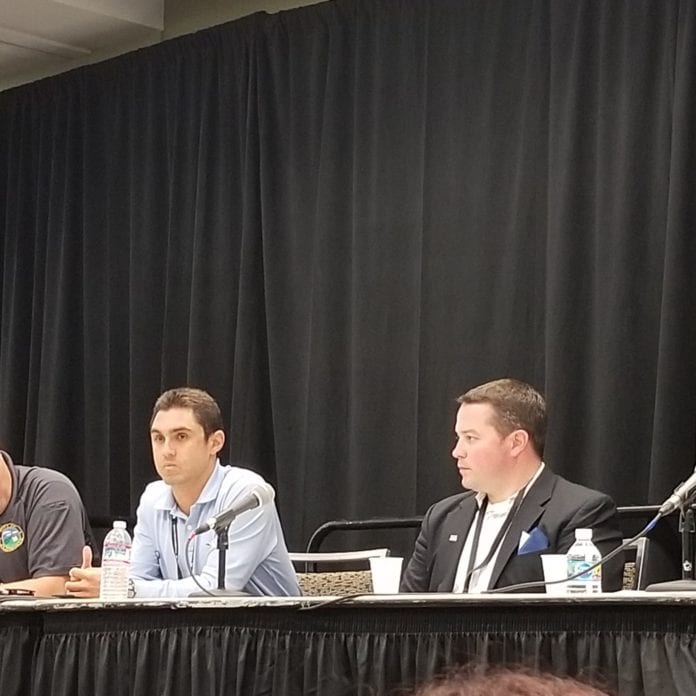BALTIMORE, MARYLAND — When the Platteville Police Department in Wisconsin was trying to figure out a way to outfit every officer with a body-worn camera during their shifts, the small department of 20 sworn officers quickly came to the realization that they didn’t have the budget to do it with purpose-built cameras.
First, it tried using locally availably cameras that had been designed for hunting, which had to be plugged in to transfer the video data and often broke — but were inexpensive to replace, according to Lt. Jeffrey Haas of the Platteville Police Department. When FirstNet first came to its area for outreach and Haas began contributing to provide state-level input, Haas said, his department’s response to FirstNet was essentially: “This is all great technology — come back when you’re ready” due to a lack of AT&T coverage in the area. About seven months later, after bolstering its network in the area, AT&T-FirstNet did come back and asked the department to give it a try.
The Platteville deployment has a learning experience all the way around, as Haas describes it: officers were able to take advantage of advanced technology, but they also provided feedback on what worked and what needed work.
“That’s the way innovation works,” Haas said. “You have to have someone on the ground level to be able to tell you that something isn’t working, and coverage isn’t good enough in that location.”
The smartphones from companies such as Kyocera or Samsung, come with multiple options for an officer to wear them: a chest clip that slides into place or a pouch that keeps the device firmly in place, or an option to wear it at their waists. A quick push of the volume button starts the recording and can stop it.
Alex Popof, CEO of Visual Labs, gave the audience at the APCO International conference a brief demonstration of the app. The Visual Labs app is FirstNet certified, meaning that it has the highest level of certification from the FirstNet organization, within the FirstNet app store.
Smartphones, Popof said, are not just video cameras and audio recording devices but are essentially body-worn computers with the capability to provide real-time information on officer location, the amount of battery life left on the device, and other information to dispatchers. Meanwhile, they can also allow officers to snap photos for evidence (with location geotags), record witness statements and send that information on immediately, in file formats that can be shared with prosecutors.
“It’s not always about the real-time information,” Popof added. “You have all this data after the fact” as well, which can be used to build data sets such as GPS-based heat maps that reflect officer activity, so a department knows where its officers are spending their time over the course of a shift and can target problem areas or shift patrols to areas which don’t get as much attention. It can also provide documentation when agencies are contracted to patrol particular areas.
“It’s not just about the video,” Popof said.
But the video has been an entry-point, at least for departments like Platteville. The city has four devices per shift operating with Visual Labs’ app, on the FirstNet network. Those devices are shared among officers. Haas said that secure data sharing with prosecutors and other records-keeping functions have been vastly simplified, in part because Visual Labs’ cloud-based data system uses common file formats, not proprietary ones. Information is stored in the cloud once collected, not on the device. Officers don’t have to write out so much of their observations of a scene, and witnesses can be recorded rather than write out statements. The only sticking point has been device battery life, he said, since they are used so heavily for video; officers have to pay attention to the battery level and re-charge as needed.

